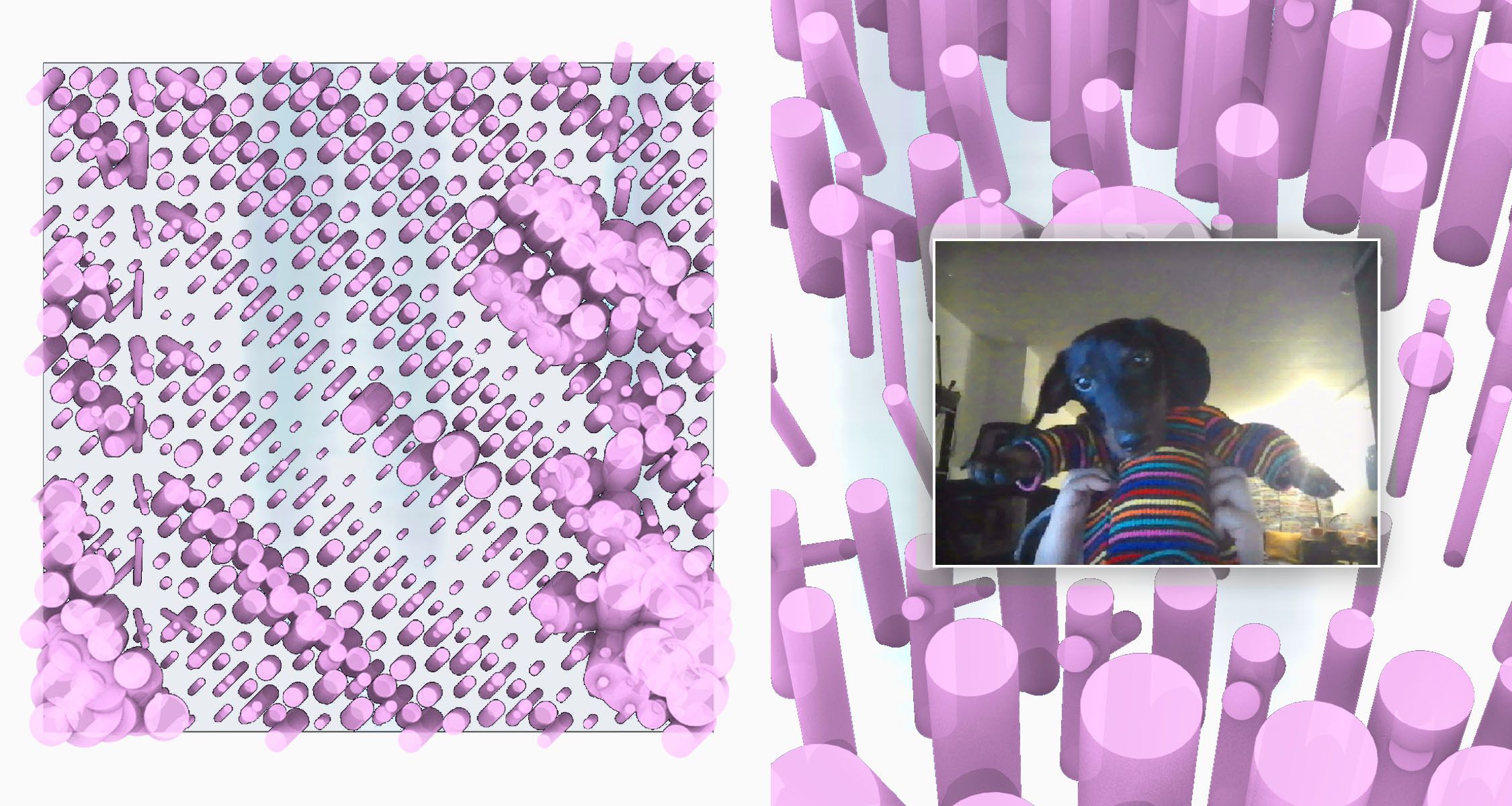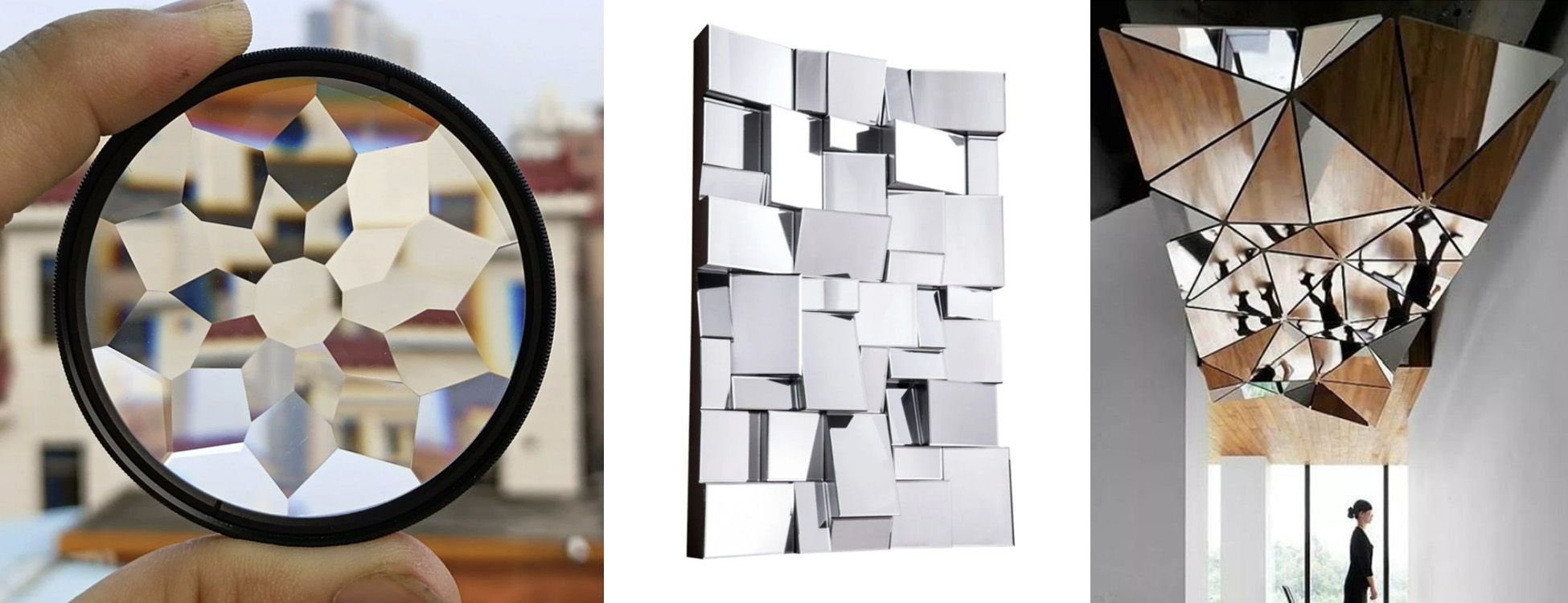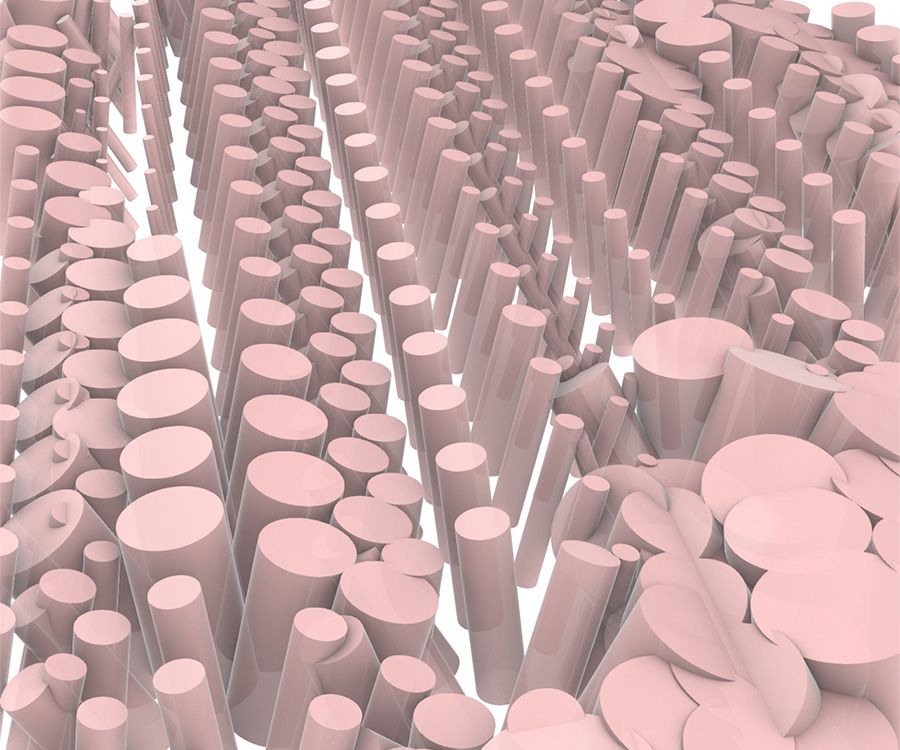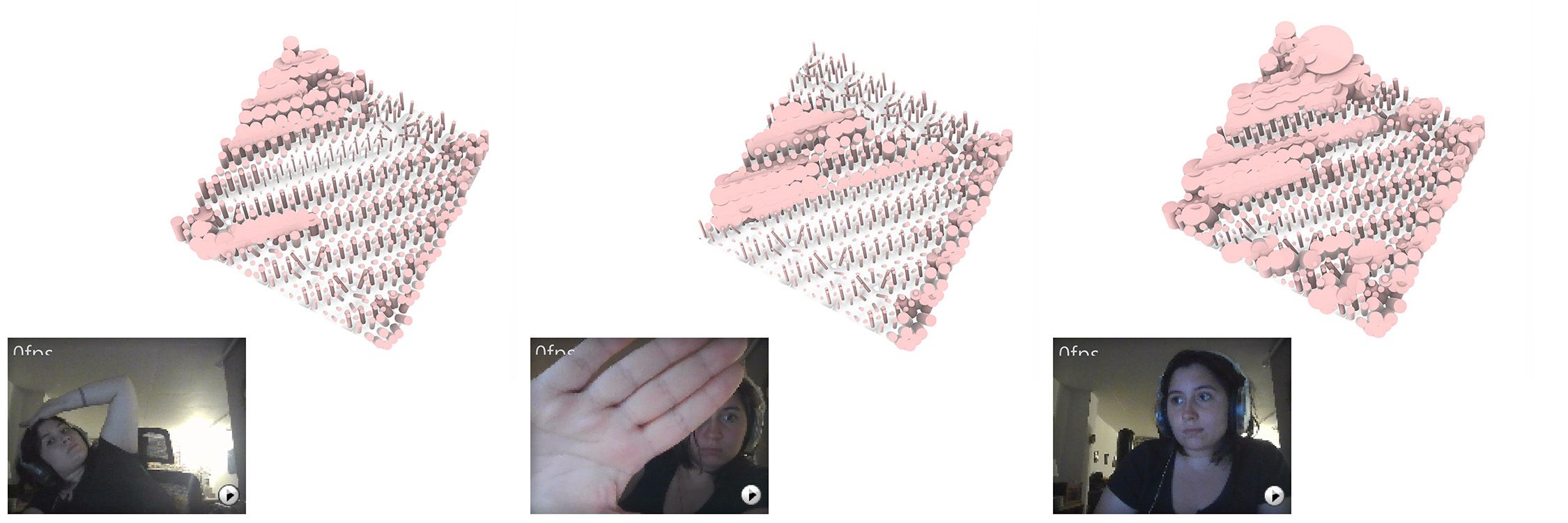Fractured Realities
How Less and More Coexist

Our concept is more & less in the sense that we are using a surface that is a mirror, and we are tessellating the planar mirror surface into a kaleidoscope pattern using gilbert tessellations. A mirror is more and less because it reflects what is there, and the more that is there the more it reflects, especially with the cracks in the kaleidoscope and gilbert pattern, but also a mirror is nothing it is just a reflection. And the Gilbert Tessellations is more and less because it is a simple set of rules that create complex geometries. Here less is creating more, which is interesting.
We chose to use live input and tessellation patterns to create an abstract representation of a kaleidoscope, following principles of separation and angles. The mesh is produced by creating a rectangular boundary, creating a base mesh with a grid defined by a set input, and applying a gilbert tessellation to remap mesh points. The objects that populate the mirrored surface are cylinders. The amount of cylinders are determined by mesh points. The angles of cylinders are determined by mesh normals. The width of cylinders are determined by the live video input.
When less and more coexist, a fractured reality emerges.



